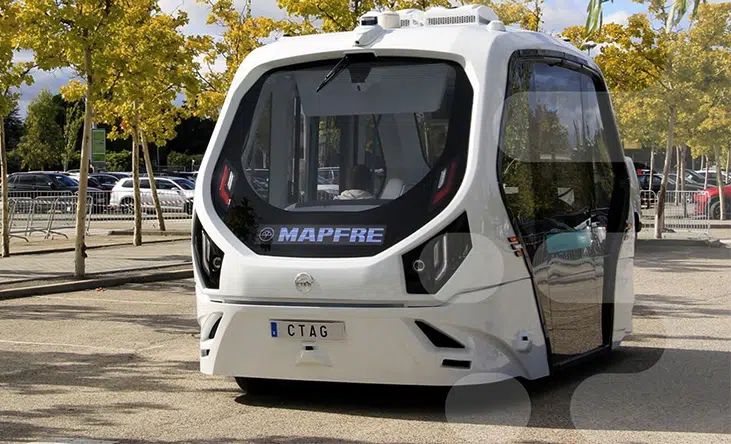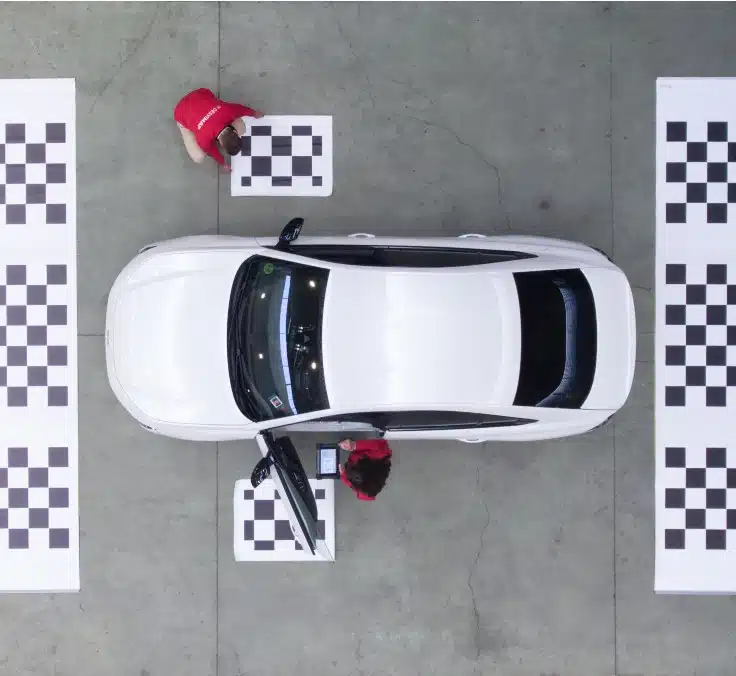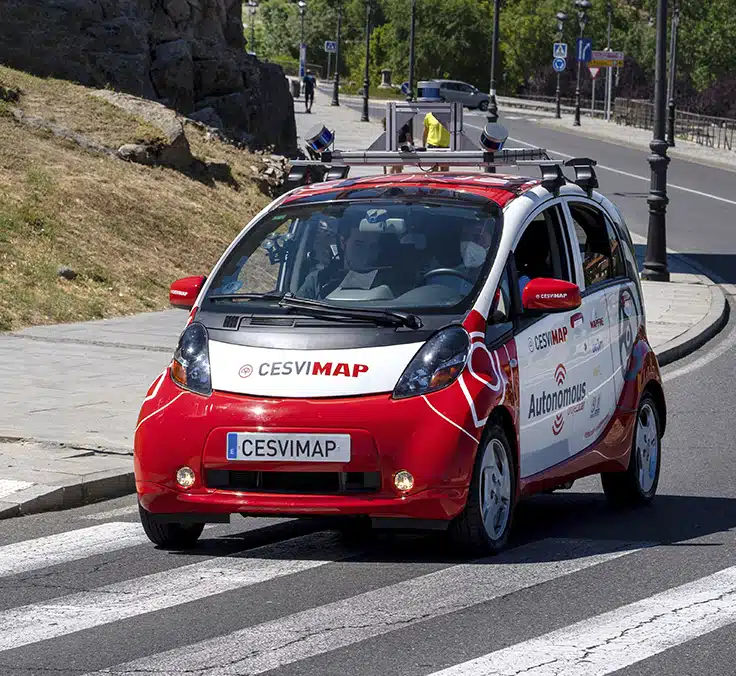INNOVATION | 11/08/2023
Autonomous delivery robots: Boosting sustainability in distribution

Teresa Majeroni
CESVIMAP communication manager and business development coordinator
In the continual search for innovative solutions, autonomous deliveryrobots have emerged as a key element in the logistics revolution. Not only do they offer efficiency, they also represent a significant contribution to environmental sustainability. These autonomous robots can transform the way we receive our packages.
Last-mile delivery is the Achilles heel of logistics companies. These kinds of deliveries require a lot of time and labor, and account for up to 28% of the total cost of shipments, according to the research group Euromonitor International. For years now, research has been being conducted into autonomous delivery robots that can navigate 99% of the time without human intervention, aided by an algorithm that locates the most efficient distribution routes. The cost advantage of these robots will come into full play when they reach the economy of scale. According to the consulting firm Atos, more than 60% of buyers would change e-commerce platforms to avoid additional shipping costs.
Delivery robots are designed in an energy efficient way. This means that they optimize routes and minimize energy consumption. Their ability to deliver accurately and quickly contributes to reducing the carbon footprint of conventional delivery methods like delivery trucks.
Compared to traditional vehicles, autonomous delivery robots are inherently smaller and lighter, and they usually drive on the sidewalks instead of on the road. By consuming fewer resources, these robots reduce traffic congestion or the need for parking. They also minimize road wear and tear, contributing to the sustainability of urban infrastructure.
Although large distribution centers provide volume and scale, sending orders to clients “on demand” and in a profitable way is increasingly difficult. The aim of these robots is to boost local trade, offering fast and affordable deliveries for small businesses. By facilitating last-mile logistics, they promote a preference for local purchases. This reduces delivery distances and the environmental impacts associated with long-distance deliveries.
Sustainable mobility seeks to reduce dependence on fossil fuels and to evolve the delivery industry toward more sustainable practices. Many of these robots are designed to be powered by renewable energy, such as solar or electrical. Similarly, as these delivery systems are more efficient, they decrease the required packaging (in plastic, cardboard, etc.).
The cutting-edge technology of these robots includes GPS, as well as advanced sensors and cameras—up to 12—that allow them to see where they are going. They travel at about 4 mi/h (similar to a pedestrian’s speed). This determines the type of products delivered (this must be taken into account when delivering hot food, for example, so that it doesn’t get cold). The robots use artificial intelligence (AI) to generate optimal routes, avoid obstacles, and offer a profitable service with distribution costs that are up to 65% lower than traditional ones. The onboard technology allows them to get around objects and people they may cross paths with and gather information about the distribution process. Users can track the order in real time, as they can see all the robot’s movements until the delivery takes place. The objective? The objective is to use this data to optimize operations and improve client efficiency and experience.
CESVIMAP, MAPFRE’s mobility laboratory, is experimenting with this technology, as well as with other autonomous vehicles that are already on the streets of Spain. CESVIMAP has analyzed the Goggo distribution robots, identifying risks and opportunities in their current performance, as well as their road navigation. The company is also behind other projects being researched at MAPFRE, such as autonomous shuttles to transport people, developed by the Centro tecnológico de Automoción de Galicia [Galicia Automotive Technology Center] (CTAG).

Which companies work with autonomous delivery robots?
Starship Technologies: This company is characterized by six-wheel autonomous delivery robots to deliver food and products over short distances. They operate electrically and optimize delivery routes in urban areas.
Nuro: For more than 7 years, Nuro has tried multiple vehicle platforms to understand the autonomy of its robots in the Bay Area of San Francisco, Los Angeles (California), and Houston (Texas). Its fleet consists of several vehicles, each with a characteristic function, developed in a Machine Learning framework to improve their perception and behavior systems.
Kiwibot: This company specializes in four-wheeled autonomous delivery robots, particularly used in food delivery. Its thousands of robots operate in 35 locations and at universities around the world. Kiwibot’s service is available on applications such as Grubhub and Everyday by Sodexo.
Amazon Scout: Amazon’s small six-wheel autonomous delivery robot began operating in 2019 in Seattle, with the idea of expanding to southern California, Georgia, and Tennessee. In 2022, the major tech company canceled home delivery tests and relocated the technical team that was running it—more than 400 people.
Amazon Prime Air: Amazon also has a package delivery service using drones. According to the company, drones deliver orders in less than 30 minutes and can avoid obstacles in the environment (trees, bushes, electrical wiring, buildings, statues, etc.) thanks to their sensor and camera technology. Drones currently operate in Lockeford (California) and College Station (Texas), but Amazon has already announced that a third U.S. city will be added in 2024. The service will also make the leap into Europe, specifically Italy and the United Kingdom.
Alibaba: Since 2020, more than 500 driverless electric robots, nicknamed Xiaomanlv or “burritos” in Mandarin, have delivered on university campuses throughout China. To achieve economies of scale, the company has tested these robots on university campuses with busy stations, which receive more than 4,000 packages a day.
Goggo Network: Founded in 2018, the company’s objective was to operate autonomous vehicle fleets in Europe and to contribute to developing the licensing system for their circulation. In 2021, Goggo Network tested the first autonomous food truck driving on the streets of Spain. It collected food from restaurants to then be sold on public roads. That same year, together with Glovo, the company presented its delivery robot in Madrid. In 2023 the company canceled all its projects.
These examples represent only a fraction of the technological race to establish delivery robots as the new future of distribution.
Associated risks
However, the deployment of these autonomous robots requires an initial investment, with high testing and manufacturing costs. A new area must be mapped before starting to provide services there to ensure that the robot can travel the route.
When we talk about risks, we are referring to:
Vandalism: Given their autonomous nature, robots may be susceptible to theft or vandalism. To deal with this, they are relatively heavy to collect or move. If someone tries to lift, tip over, or manipulate them, an alarm sounds as a deterrent. Each robot is tracked by GPS with an accuracy of centimeters, and the lid is locked throughout the delivery journey to protect the items it contains. The robots can only be unlocked by the client at the delivery destination using a code.
Obstacles in the environment:: Delivery robots can overcome difficulties navigating through complex urban environments with unforeseen obstacles such as pedestrians, bicycles, or elements on the road.
Regulations: Local regulations aren’t yet adapted to the presence of these level 4 robots in public spaces, which limits their deployment.
Interactions with pedestrians: Some people may feel uncomfortable or unsafe when sharing a space with robots, especially in crowded environments.
Weather conditions: Climate factors such as heavy rain, snow, or strong winds affect the mobility and effectiveness of delivery robots, limiting their operational capacity.
Maintenance and technical failures: Autonomous robots are subject to wear and tear and possible technical failures, which interrupt their delivery operations.
Road safety: Although robots are programmed to comply with safety standards, their low volume doesn't allow us to know how they will interact with vehicular traffic and whether other road users will respect their presence.
Delivery integrity: Guaranteeing safe delivery is essential. What happens if the recipients can't interact properly with the robot or if human intervention is required to complete the delivery?
Will delivery robots revolutionize logistics efficiency? Various companies and research centers, such as CESVIMAP, are currently studying their role in building a more sustainable future, as well as the matter of insuring them.
From energy efficiency to waste reduction, these autonomous robots represent the cutting edge in the convergence of technology and environmental responsibility. They are paving the way to greener and more efficient delivery.
RELATED ARTICLES:


